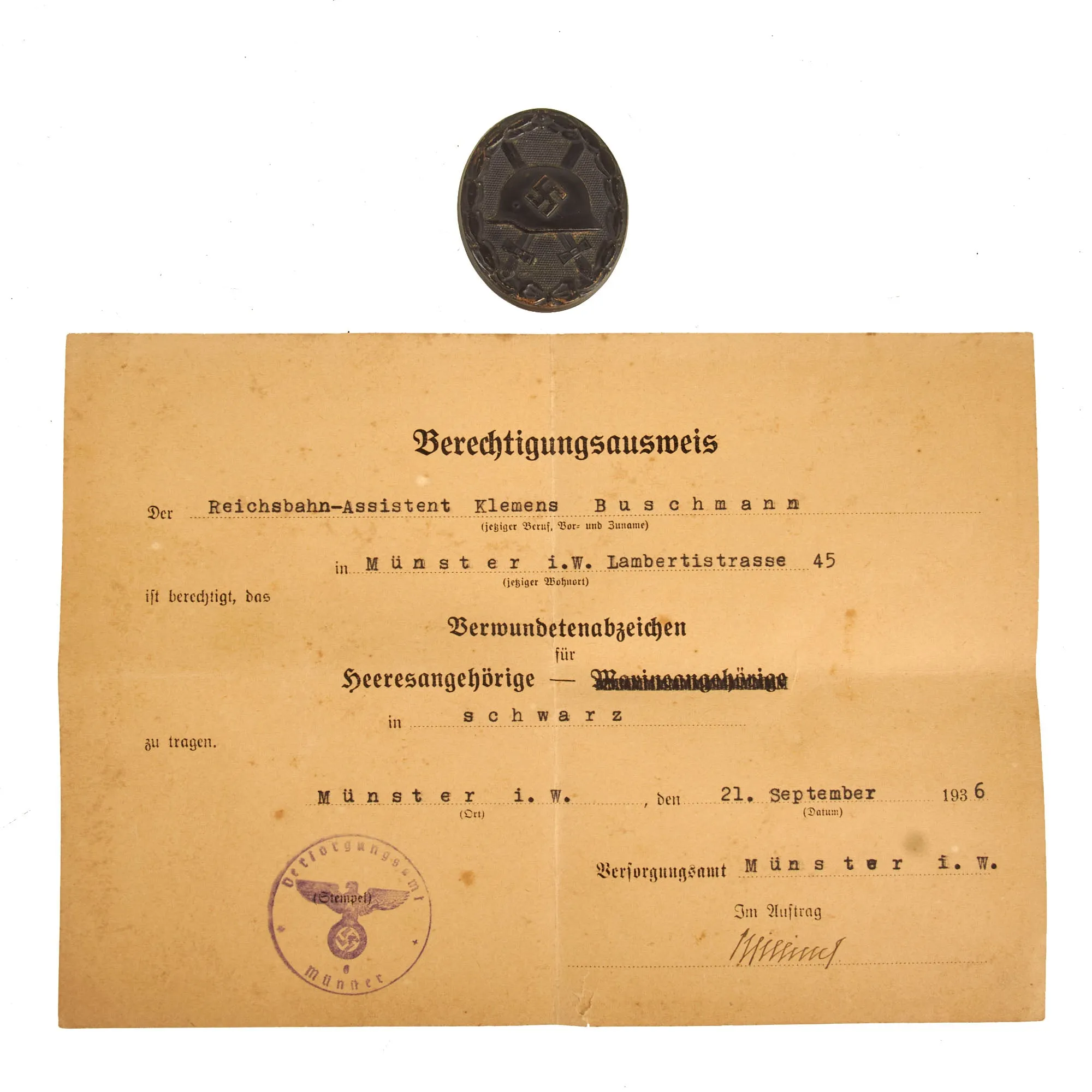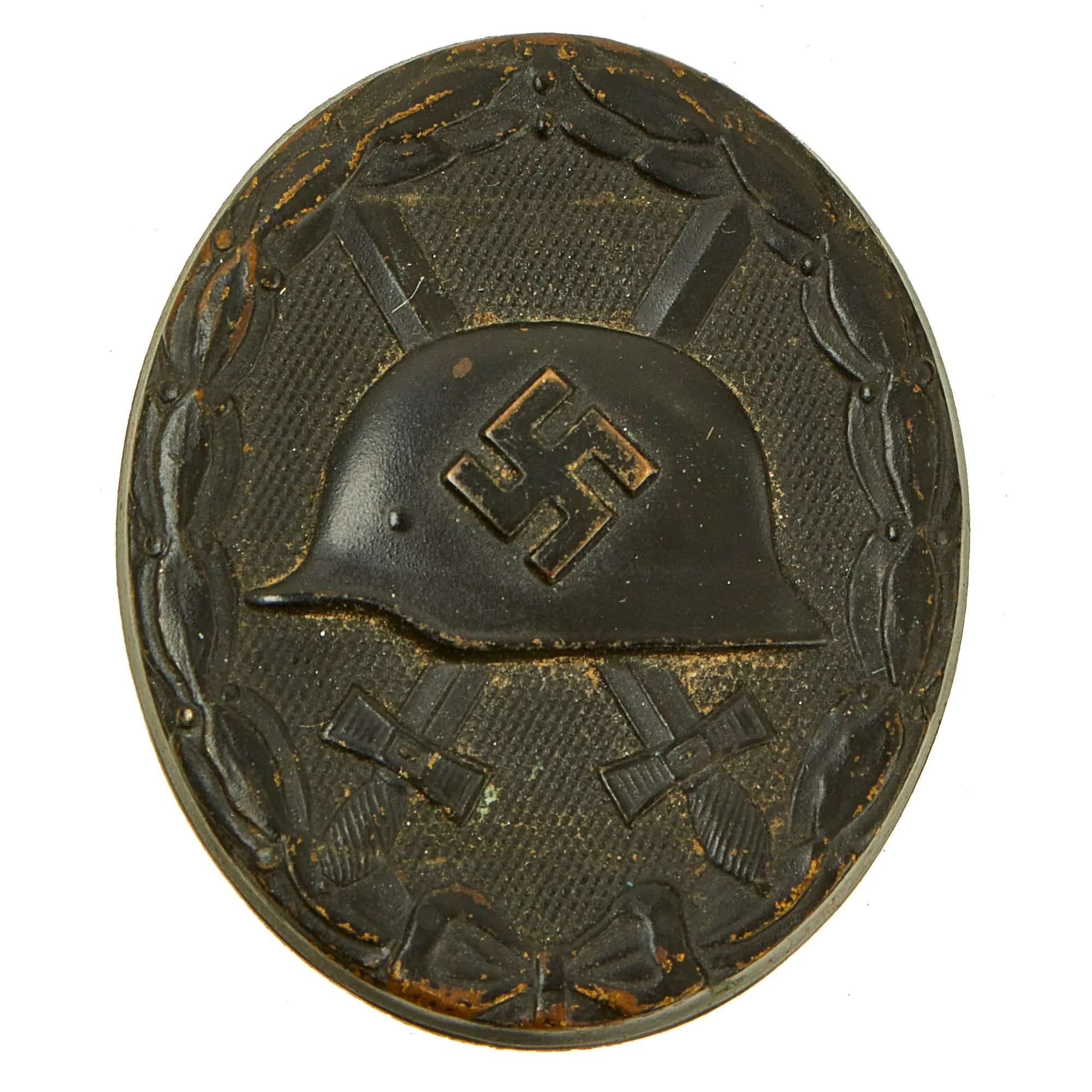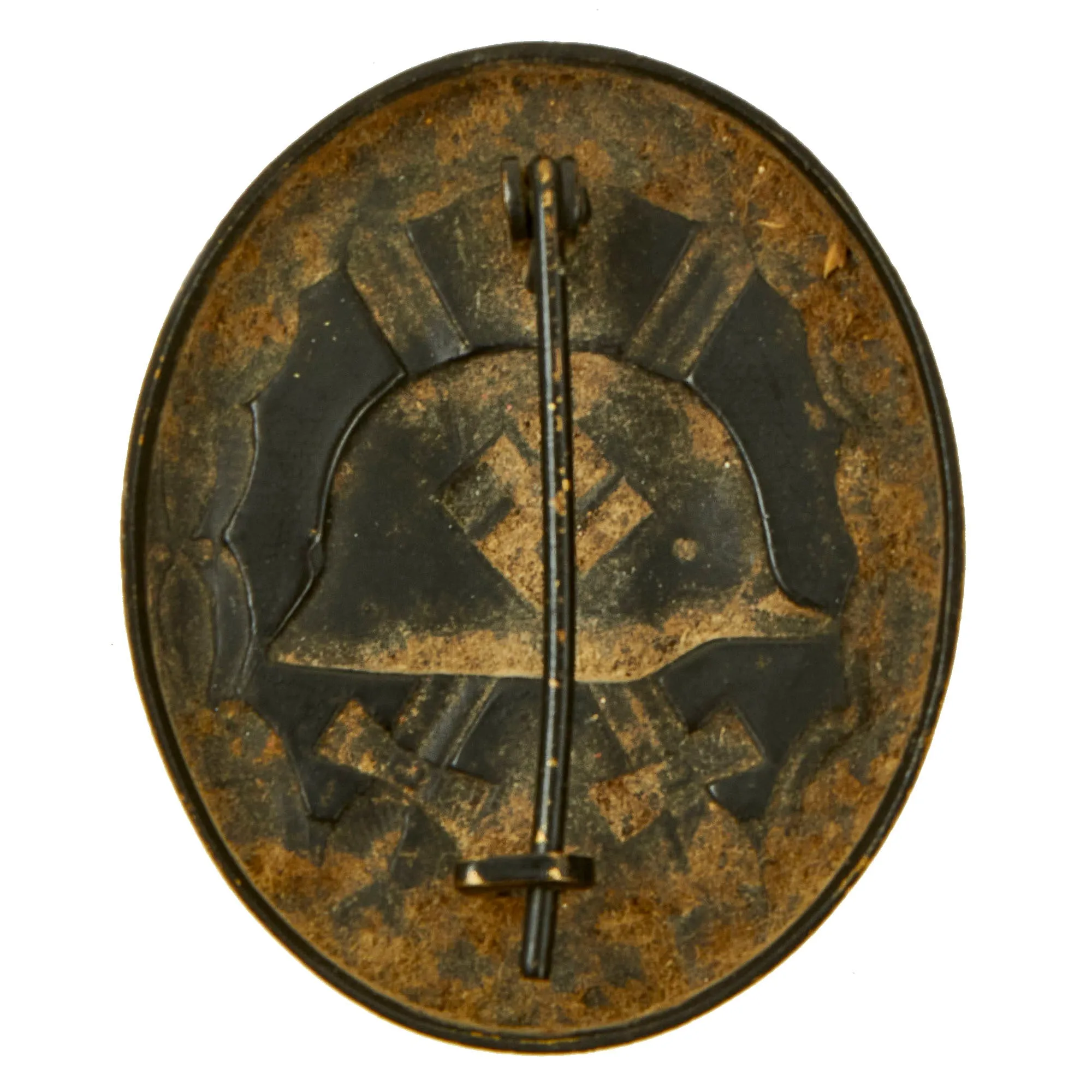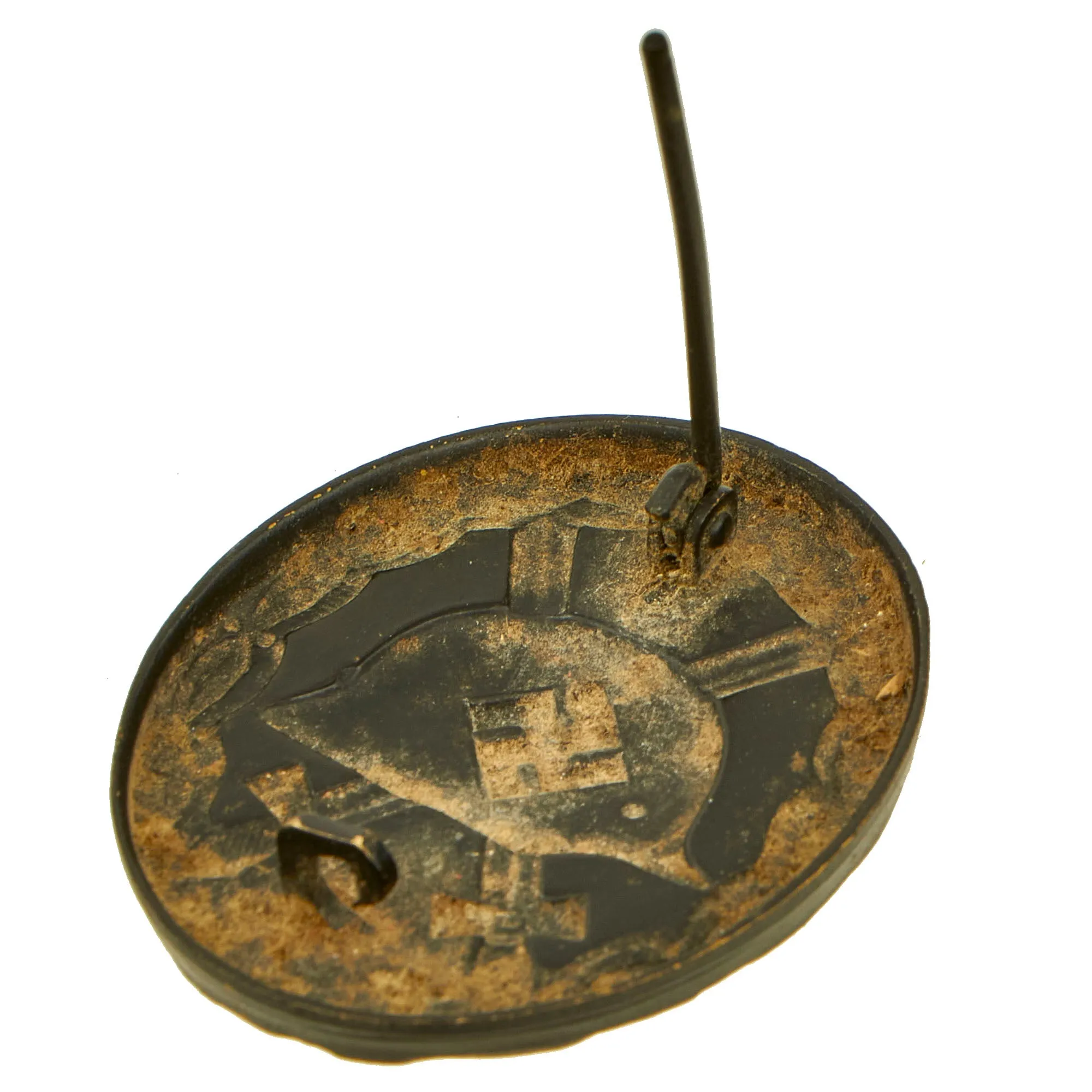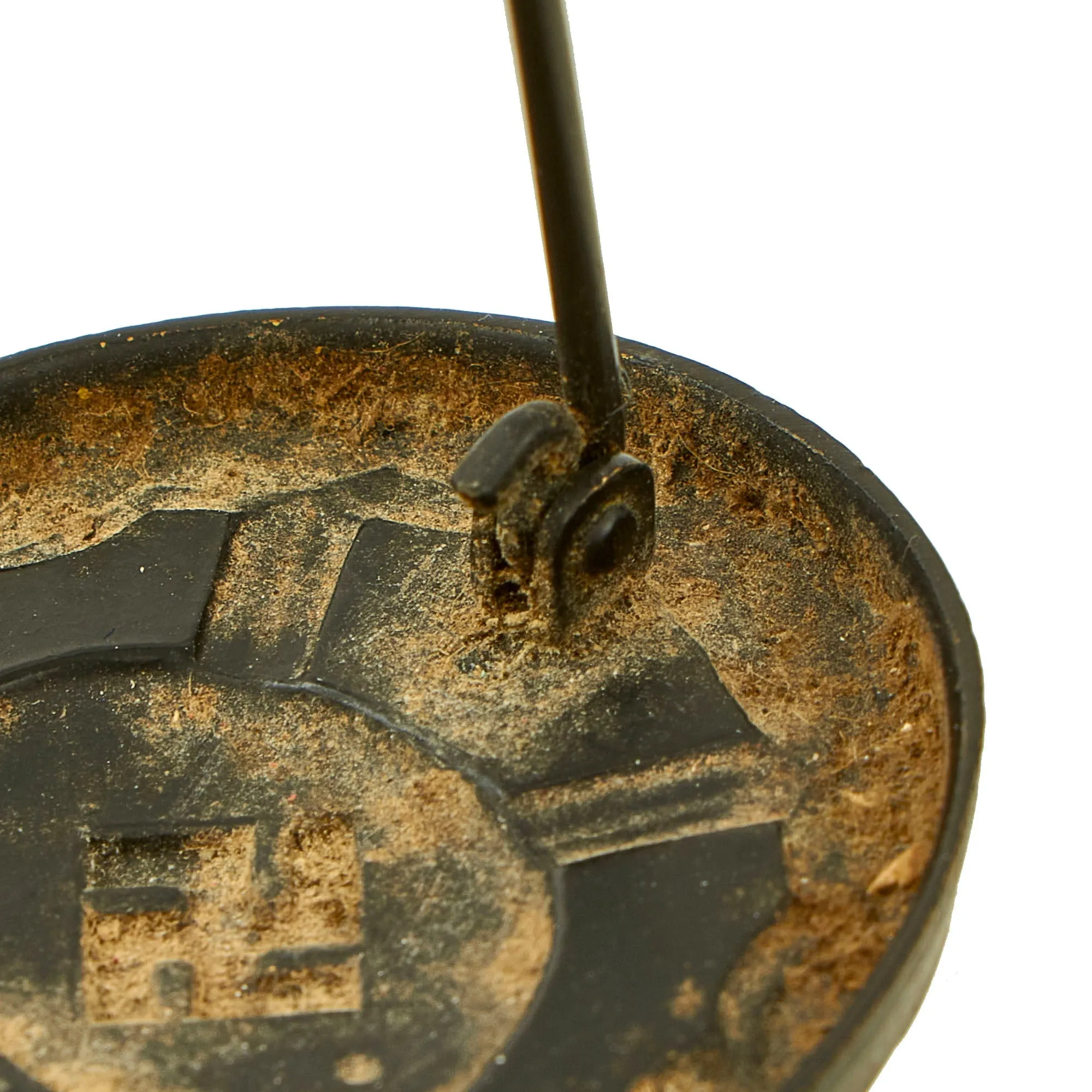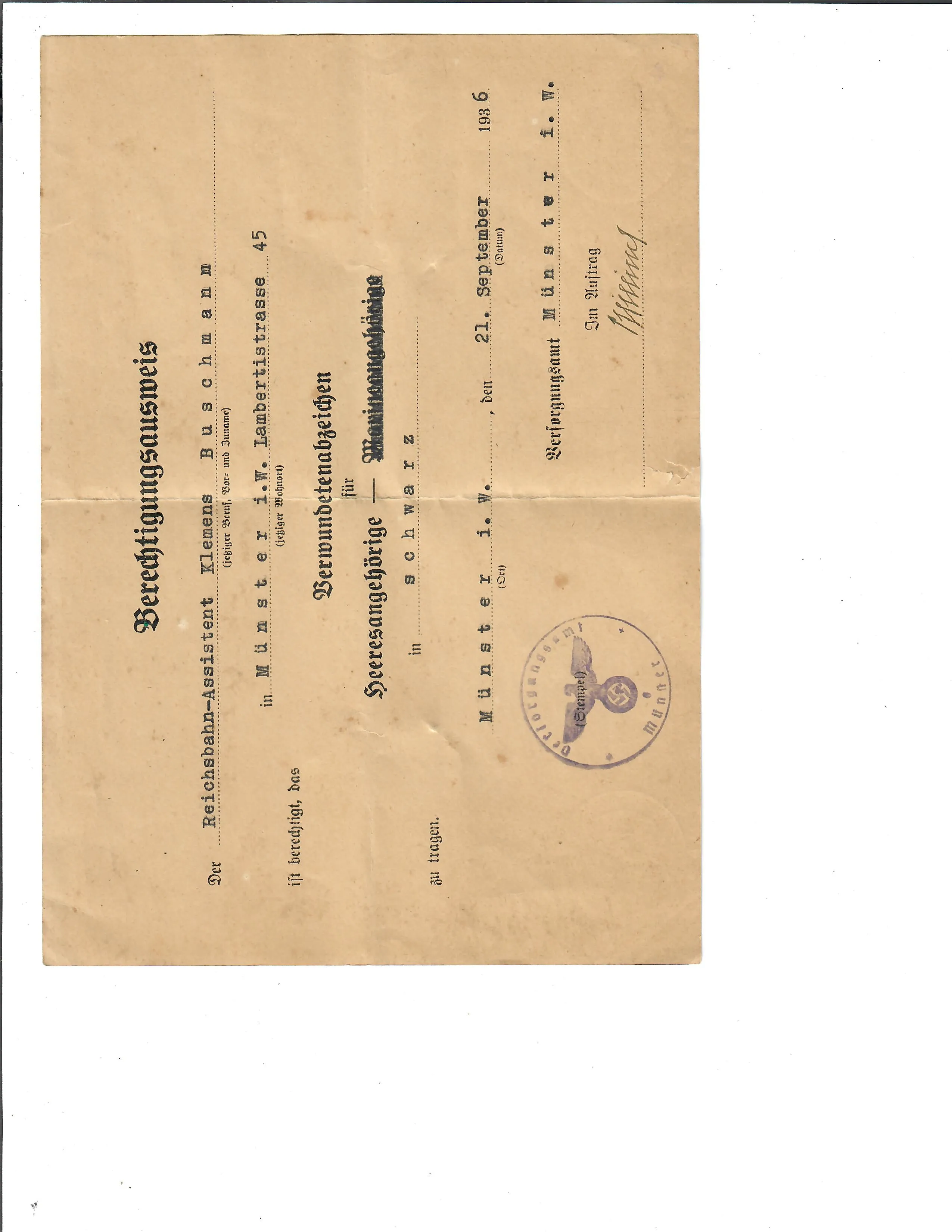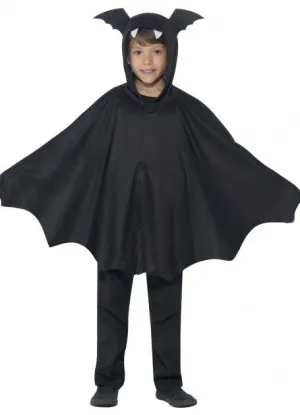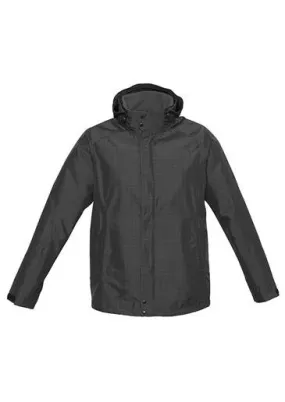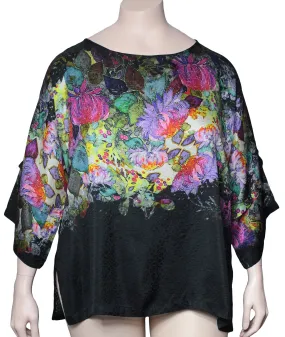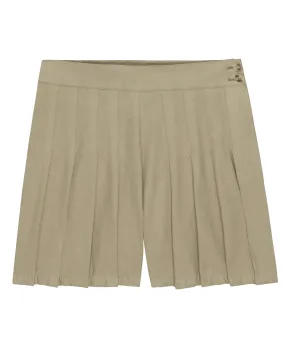Original Item: Only One Available. This is a very nice early issue painted stamped brass construction black (3rd Class) wound badge, complete with its original Berechtigungsausweis (authorization card) "possession/award" certificate!
The award document indicates that it was awarded to Reichsbahn-Assistent Klemens Buschmann, who was living in Münster, presumably also where he was stationed at the time. He was awarded the Verwundetenabzeichen für Heeresangehörige in schwarz (Wound Badge for Members of the Army in Black) on 21. September 1936. It bears the stamp of Versorgungsamt Münster (Pension Office Münster) on the lower left, and is signed on the lower right. The document has all the correct stamps and markings, and is the standard, 8 1/4" x 5 7/8", (21cm x 15cm), printed on mid-weight paper with black print and typed in particulars. Definitely a very early issued award, with some interesting research potential!
The badge itself is constructed from stamped brass in the Pre-WWII style, which has been painted black. The oval badge depicts an embossed profile of a mobile swas, above an M35 pattern helmet, which is above two crossed broad swords. This then lies on a pebbled field and is surrounded by a laurel leaf and berry wreath which is tied together at the bottom with a bow tie. The pin, hinge and catch are all intact and in well-working condition. The black paint is very well retained, with just a bit of wear on the swas (hook cross). The badge measures 1.75 inches high by 1.5 inches wide, and there is some old dust / dirt on the interior of the badge, which we have left in place ot preserve the history of the item.
A very nice pre war example, complete with document, ready to add to your collection!
The German Wound Badge (Verwundetenabzeichen) was instituted during the First World War to recognize those wounded in the conflict. It was designed using a World War One style Imperial German helmet as the main motif. The helmet was set on top two crossed swords against a pebbled background and surrounded by a laurel leaves wreath.
During the Spanish Civil War the Third Reich reinstated the Wound Badge for a short period to honor those who were wounded during the conflict from 1936 to 1939. These German units participating in the assistance of the Spanish Fascists were deemed the “Condor Legion”. The pattern of the World War One Wound Badge was again used, except this time with a raised swas on the center of the World War One era helmet.
At the outbreak of war in September 1939 with Poland, Adolf AH once again reinstated the Wound Badge Award. Again the pattern of the badge was similar to that of the earlier style except the new design was freshened up a bit by using an M35 pattern German helmet and a slightly softer looking wreath. This pattern was used until the end of the war in 1945. After March 1943, due to the increasing number of Allied bombings, it was also awarded to wounded civilians in air raids. It was awarded when the wound was the result of enemy hostile action, with an exception being for frostbite. It is impossible to know the exact numbers of wound badges awarded during the course of the Second World War due to the vast scale and countless individuals who were wounded or killed in the conflict.
The badge had three classes:
- Black (3rd class, representing Iron), for those wounded once or twice by hostile action (including air raids).
- Silver (2nd class) for being wounded three or four times.
- Gold (1st class, which could be awarded posthumously) for five or more times wounded.
The "progression" could be waived in the event of loss of a limb or eyesight; when such a severe wound occurred, the silver badge was awarded.
Badges were made of pressed steel, brass and zinc. All versions of the Wound Badge were worn on the lower left breast of the uniform or tunic. The badge was worn below all other awards on the left. It ranked lower than combat badges. There were 24 approved manufacturers of the Wound Badge. At first, the Wound Badge in Black was stamped from sheet brass, painted semi-matte black with a hollow reverse pin back attachment or of solid construction. From 1942, steel was used to make the badges. The Wound Badge in silver was made (before 1942) from silver-plated brass, and (after 1942) from lacquered zinc, and had a solid reverse with either a needle pin or a broad flat pin bar. The Wound Badge in Gold was a gilded version of the Wound Badge in Silver. In 1957, a revised version of the Wound Badge was authorised for wear; however, the previous type could still be worn if the swas were removed (for example by grinding).




